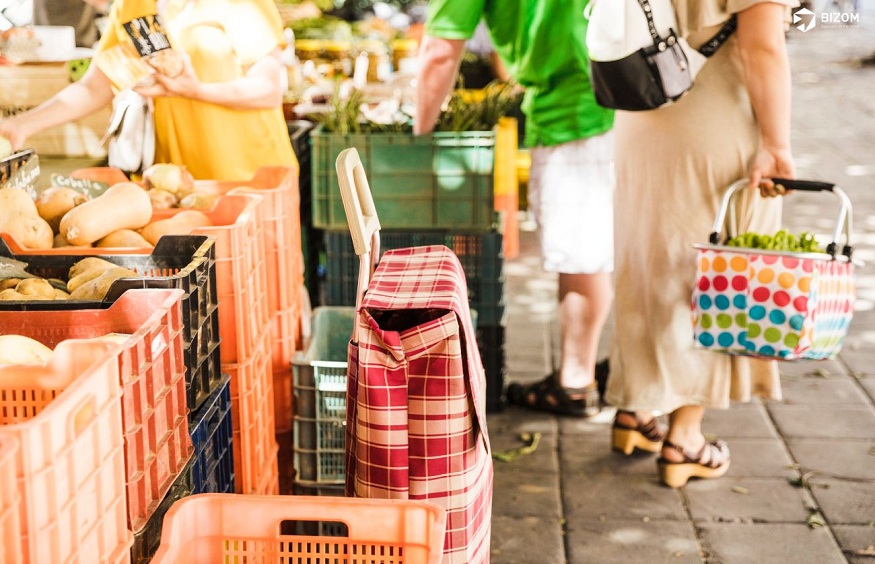The Fast-Moving Consumer Goods (FMCG) market in India is one of the largest and fastest-growing sectors of the economy. From daily essentials like food and beverages to personal care products, household goods, and health-related items, FMCG brands are an integral part of Indian consumers’ lives.
In recent years, consumer behaviour and preferences have evolved due to several factors, such as technology, lifestyle changes, and increasing health and sustainability awareness. These changes are shaping the direction of the Indian FMCG market, and companies are adapting to stay relevant and competitive. Here are some of the key consumer trends that are currently driving the FMCG market trends in India.
1. Rising Demand for Health and Wellness Products
Indian consumers are becoming more health-conscious, especially after the COVID-19 pandemic. People are paying closer attention to what they eat and how they take care of their bodies. This trend has led to a surge in demand for products like immunity boosters, organic foods, and natural skincare items. Consumers are also looking for products with fewer artificial ingredients and more natural alternatives, such as herbal and Ayurvedic products.
FMCG brands are responding by launching healthier versions of existing products and introducing new lines that cater to wellness-focused consumers.
2. Sustainability and Eco-Friendly Choices
Environmental awareness is growing among Indian consumers, and this is impacting their buying decisions. People are looking for products that are environmentally friendly, whether it’s through eco-conscious packaging or sustainable sourcing of raw materials. There is also a growing preference for biodegradable packaging, reusable containers, and products that generate less plastic waste.
FMCG companies are being pushed to reduce their carbon footprint and adopt more sustainable practices. Brands that are perceived as being eco-friendly or supporting environmental causes are gaining a competitive edge in the market.
3. Digital Transformation and E-commerce
With the rapid growth of the internet and smartphone usage in India, more consumers are shopping online. E-commerce platforms, as well as direct-to-consumer (D2C) websites, have become popular avenues for purchasing FMCG products. Consumers appreciate the convenience of having goods delivered directly to their homes, the ease of comparing prices, and access to a wide range of products that might not be available in local stores.
As a result, FMCG companies are increasingly focusing on their digital presence, investing in online marketing, and partnering with e-commerce giants like Amazon and Flipkart. Some brands have even launched their own online stores to cater to the tech-savvy population.
4. Premiumisation and the Demand for Quality
While affordability remains a crucial factor for a large section of the Indian population, there is a growing trend of consumers willing to pay more for premium products. This “premiumisation” trend is driven by rising disposable incomes, changing lifestyles, and the desire for better-quality products. Many urban consumers, especially those in the middle and upper-income brackets, are opting for premium versions of everyday goods, from gourmet snacks to high-end skincare products.
FMCG brands are capitalising on this by offering “luxury” variants of their products, positioning them as high-quality, superior choices.
5. Localisation of Products
Indian consumers are incredibly diverse, with varying tastes and preferences based on region, culture, and lifestyle. As a result, FMCG companies are increasingly localising their product offerings to cater to specific markets. This can be seen in food items where flavours are adjusted to suit regional tastes or in beauty products tailored to different skin and hair types prevalent in various parts of the country.
Localisation also extends to packaging and marketing strategies. Brands are customising their messaging to resonate with regional sentiments and languages.
6. Convenience and Ready-to-Eat Products
As urbanisation and busy lifestyles continue to rise, convenience has become a major factor driving FMCG sales. People are looking for products that save time and effort, leading to increased demand for ready-to-eat meals, instant foods, and single-serve packaging. The rise of nuclear families, working professionals, and students living away from home has fueled this trend even further.
FMCG companies are introducing a wide range of convenience-focused products, from instant noodles and ready-to-eat curries to microwaveable snacks and pre-packaged salads.
7. Increased Focus on Hygiene and Safety
Post-pandemic, hygiene and safety have become paramount for Indian consumers. There is a heightened awareness of cleanliness, and this has translated into increased demand for hygiene products such as hand sanitisers, disinfectants, and personal protective items. Consumers are also more conscious of food safety, choosing packaged goods over open market items for the assurance of hygiene.
In response, FMCG companies prioritise safety in their production processes, highlighting the cleanliness of their manufacturing and packaging methods in their marketing efforts.
8. Rise of Private Labels
As consumers become more price-conscious, especially amid economic uncertainties, private labels or store brands are gaining popularity. Retailers like Big Bazaar, Reliance Retail, and online platforms like Amazon have introduced their own brands, offering FMCG products at lower prices than national brands.
Wrapping Up
The Indian FMCG market is evolving rapidly and is driven by changing consumer preferences. Health consciousness, sustainability, digital shopping, premiumisation, and convenience are among the major trends influencing buying behaviour.
You may also like
-
Why Wooden Pallets Are Still the Most Popular Choice for Logistics
-
Choosing the Right Pallet for Export: Plastic vs Wooden Pallets
-
Avoid These Common Mistakes with Corporate Event Invitations
-
The Benefits of Working with a One-Stop Online Engineering Plastics Supplier
-
Comprehensive Warehouse Equipment Solutions for Your Industry

